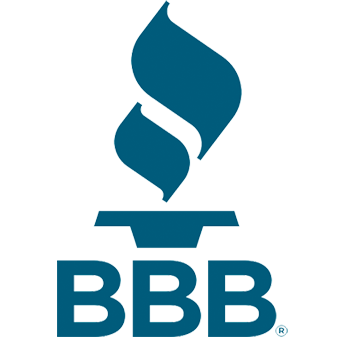
Compare CT Electric Rates
Enter your zip code to compare Connecticut electricity rates and electric companies.
EnergyBot rates are updated in real time. Partners don’t influence our content, but we may mention their plans. How we make money.
Today’s Business Electricity Rates in Connecticut
Average Connecticut Electric Rates
This section highlights the average Connecticut electricity rates for residential and commercial customers.
Last updated January 2026
- The average Connecticut commercial electricity rate is 21.58 ¢/kWh (60% higher than the national average).
- The average Connecticut residential electricity rate is 27.72 ¢/kWh (54% higher than the national average).
Source: Connecticut energy data from The U.S. Energy Information Administration (EIA)
Connecticut Business Electricity Rate Trends
These are the business electricity rates in Connecticut over the past year. It's important to note that these rates are for all utilities in Connecticut and are based on an average small business electricity usage of 2500 kWh per month. Connecticut electric rates vary depending on how much energy you use. To shop for today’s electricity rates in Connecticut, visit this page.
Switch Electricity Providers in Connecticut
In a competitive electricity market like Connecticut, both commercial and residential customers are provided with energy choice. This means all customers get to choose their specific electricity supplier, plan, and rate and then switch based on any existing contract terms, renewal dates, and fees.
As a consumer, it’s important to track your renewal date. When your energy plan is due to renew, it’s a good time to compare electricity rates and then switch to the best rate for your home or business. When switching energy plans, keep these 5 easy steps in mind:
Step 1: Compare energy providers and energy prices online
This is the easy part and it starts online. Today, businesses have a variety of online websites and tools to research and compare energy providers, plans, and rates. The best way to compare providers is to use a simple website like EnergyBot. In less than 5 minutes, you can enter basic information about your business, like your zip code and monthly electricity bill, and then compare dozens of top energy suppliers in Connecticut to find the lowest energy rate.
Step 2: Take time to review the energy plan details
When you are comparing electricity plans, it will pay – literally – to take time to review the plan details, contract terms, and legal copy. Energy companies may entice you with a low rate, yet the fine print may reveal that it is a variable rate – which is only applicable if you stay in a specific range of energy (kWh) usage each month. It’s also important to review the contract term, cancellation fees, and out clauses before signing up for a new plan.
It’s important to do your research and if you’re short on time, EnergyBot makes it simple. Check out this article to learn more about the different types of energy plans and rates.
Step 3: Upload your most recent electricity bill
In many cases, the energy supplier, broker, or website you use to find a new electricity plan will ask you to upload your most recent electricity bill. Although this may feel a bit intrusive, it provides pertinent account information, which is important for securing the best energy rate available for your business. Your energy bill includes your business information as well as data outlining your monthly energy usage.
To add, your new energy supplier will require proof of your energy usage before you can switch and your electricity bill is the easiest way to meet the requirement.
Step 4: Request a custom electricity pricing quote
If you own or manage a larger business with high energy usage (and higher monthly bill), then it may be beneficial to request a custom pricing quote. As a larger business may have much higher monthly energy usage or inconsistent energy usage, energy suppliers require a comprehensive review of your business’ energy usage to provide a custom quote on a new plan and rate. At EnergyBot, you can get a custom quote for free.
Step 5: Confirm the switch to a new energy provider
After authorizing a switch to a new energy provider, you will receive a confirmation email with the plan details and start date. It’s very important to review the plan you authorized and confirm the new start date. The transition to a new supplier will be seamless…you won’t even notice until you get the electricity bill the next month.
Types of Energy Plans Offered in Connecticut
Electric companies offer two different types of plans for residential and business customers: a fixed-rate plan or a variable-rate plan.
Each type of plan has its respective pros and cons. As a Connecticut customer, it’s important to understand the two types of plans before signing up for an electric plan for your home or business. In Connecticut, consumers have the choice of electric suppliers while still being serviced by specific public utility delivery companies like the United Illuminating Company (UI).
Fixed-Rate Electricity Plans
The simple definition of a fixed-rate plan is that you are signing a contract with an energy supplier that offers a fixed-rate – meaning that the rate will remain constant for the term of the contract. Regardless of weather, natural events like tornados, or market volatility, your rate will not change. In most cases, fixed-rate plans have a term length of 6, 12, 24, or 36 months.
Variable-Rate Electricity Plans
The simple definition of a variable-rate plan is that you sign a contract with an energy supplier that offers a variable rate. This means that the rate may change monthly based on market factors. Variable-rate plans offer more flexibility but also present more volatility in pricing, which may impact your monthly electricity bill.
It is important to audit your energy usage and select the right plan—a fixed-rate plan or a variable-rate plan—before signing a contract with an energy supplier.
Choosing the Best Electricity Plan for Your Needs
Choosing the best electricity plan for your needs can be a daunting task, especially with the numerous options available in Connecticut. To make an informed decision, it’s essential to consider several factors, including your energy usage, budget, and personal preferences. Here are some tips to help you choose the best electricity plan for your needs:
- Assess your energy usage: Understand your energy consumption patterns, including the amount of electricity you use, the time of day you use it, and the appliances that consume the most energy. This information will help you determine the best plan for your needs.
- Set a budget: Determine how much you can afford to pay for electricity each month. Consider your income, expenses, and other financial obligations to set a realistic budget.
- Consider your options: Research different electricity plans, including fixed-rate, variable-rate, and green energy plans. Compare the rates, terms, and conditions of each plan to determine which one best suits your needs.
- Look for additional benefits: Some electricity plans offer additional benefits, such as energy efficiency programs, renewable energy credits, or customer rewards. Consider these benefits when choosing a plan.
- Read reviews and check ratings: Research the electricity supplier’s reputation by reading reviews and checking their ratings with the Public Utilities Regulatory Authority (PURA) and the Better Business Bureau (BBB).
By considering these factors, you can choose the best electricity plan for your needs and enjoy a reliable and affordable energy supply.
Connecticut Electric Providers and Utilities
Utilities are the entities responsible for operating and maintaining energy infrastructure, such as wires and towers. The local utilities in Connecticut are Connecticut Light & Power (CL&P) and United Illuminating Company (UI). Each utility transports electricity from generators to residential homes and businesses in its specific region of Ohio.
Energy providers in Connecticut, such as Direct Energy and Public Power, are competitive energy retailers. Each provider buys energy from the wholesale market (the generators) and then resells it to customers (homeowners, renters, and businesses).
In most cases, the customer (homeowner, renter, or business) signs a contract with an energy provider for a specific energy plan. The basic energy plan details the rate class, the energy rate per kWh, the contract term length (6, 12, 24, or 36 months), and other contract terms, such as the cancellation fee policy.
Energy Deregulation in Connecticut: Role of the Public Utilities Regulatory Authority
In 1998, Connecticut adopted legislation (PA 98-28) that allowed consumers to choose their electric suppliers. At the time, the act required the state’s two electric companies, Connecticut Light & Power (CL&P) and United Illuminating Company (UI), and the Department of Public Utility Control (DPUC) to take steps to establish a deregulated, or competitive, energy market.
The first step was to force Connecticut Light & Power (CL&P) and United Illuminating (UI) to separate energy generation from energy supply. This unbundling of services forced the Connecticut-based energy companies to be more efficient and compete for customers. It also offered businesses of all sizes the opportunity to compare energy plans from a larger list of suppliers and shop for the best available rates.
The Connecticut competitive energy market was slow to develop from its inception until the early 2000s. Today, however, customers have a better understanding of how the market works, and nearly half of Connecticut customers switch energy suppliers each year.
For businesses, large and small, the Connecticut deregulated market enables business owners and managers to compare energy plans from top energy suppliers and shop for the best rate.
In most cases, Connecticut businesses that take advantage of the competitive market can more effectively manage their monthly electricity costs by switching energy plans at each year or upon the contract renewal period.
What is the Connecticut Energy Efficiency Board (EEB)?
The Connecticut EEB is a group of advisors who utilize their energy experience and expertise with energy issues to support the state’s utility companies and guides the distribution of the Connecticut Energy Efficiency Fund (CEEF). The goal of the EEB is to offer comprehensive, cost-effective energy plans to Connecticut consumers, contribute to the reduction of energy usage in homes and businesses as well as help the state meet its future energy needs. The Board was created in 1998 by the Connecticut State Legislature, and operates under mandates in Public Acts 11-80 Section 33 and 13-298 Section 16.
Frequently Asked Questions About Connecticut Electricity Plans
Here are some frequently asked questions about Connecticut electricity plans:
- What is the difference between a fixed-rate and variable-rate electricity plan? A fixed-rate electricity plan offers a fixed rate per kWh for a specified period, while a variable-rate electricity plan offers a rate that can change monthly based on market conditions.
- What is a green energy plan? A green energy plan generates electricity using renewable energy sources, such as solar or wind power.
- How do I choose the best electricity plan for my needs? Consider your energy usage, budget, and personal preferences. Research different plans, compare rates, and evaluate the contract terms.
- What is the competitive transition assessment (CTA) charge? Electricity suppliers charge this fee to recover the costs of transitioning to a competitive electricity market.
- Can I cancel my electricity plan at any time? Yes, you can, but you may be subject to cancellation fees or penalties.
- How do I read my electricity bill? Your electricity bill will show your energy usage, the rate per kWh, and the total cost of your electricity. It may also show additional charges, such as the CTA charge or the systems benefit charge.
- What is the Public Utilities Regulatory Authority (PURA)? The Public Utilities Regulatory Authority (PURA) is the regulatory agency responsible for overseeing the electricity industry in Connecticut.
Addressing these common questions can help you better understand Connecticut's electricity plans and make informed decisions about your energy supply.

 A+
A+

 4.8
4.8





